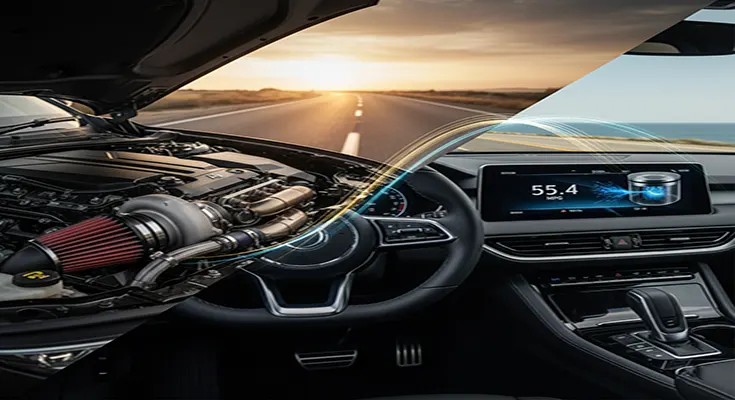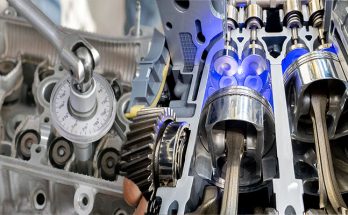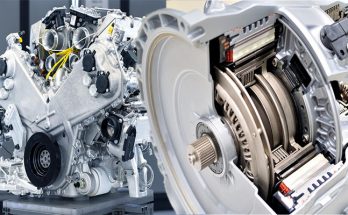The quest for a more responsive, powerful drive often comes with the fear of soaring fuel costs. Traditionally, greater horsepower meant greater thirst. However, modern automotive technology and smart tuning practices have created a sweet spot where increased power and improved fuel efficiency can go hand-in-hand. The secret lies in improving your engine’s efficiency—allowing it to make more power from the same amount of fuel by making it “breathe” and operate better.
Here are the key strategies to unleash more power from your car’s engine while maintaining (or even improving) your miles per gallon (MPG).
1. Optimize Engine Management with ECU Tuning (The Brain)
This is arguably the most effective modification for a dual-benefit gain. Your car’s Engine Control Unit (ECU) is the computer that manages the air-fuel ratio, ignition timing, and boost pressure (on turbo/supercharged cars).
- The Problem: Factory ECU tunes are often conservative, prioritizing compliance with broad emission standards and reliability across varying fuel qualities and climates.
- The Solution: Professional ECU remapping (or “chipping”) or installing a performance tuner can optimize these parameters. A good tuner can lean out the air-fuel ratio during cruising conditions (known as “lean cruise”) and optimize ignition timing for maximum combustion efficiency. The result is a more powerful, more responsive engine that is also more efficient because it is operating closer to its ideal thermal efficiency.
- The Benefit: Significant gains in both horsepower and torque, often coupled with a noticeable improvement in fuel economy, especially under normal driving conditions.
2. Improve Airflow: Intake and Exhaust (The Lungs)
An engine is essentially an air pump. The easier it is for the engine to take in cool air and expel exhaust gases, the more efficiently it can operate.
Cold Air Intake (CAI) and Performance Filter
- The Science: Cooler air is denser, meaning it contains more oxygen molecules in the same volume. More oxygen allows for a more complete burn of the fuel, resulting in more power. A CAI system repositions the air filter to draw in air from outside the hot engine bay.
- The Effect: Increased horsepower and a slight improvement in efficiency, as the engine doesn’t have to work as hard to draw in air. A high-flow air filter further reduces restriction compared to a standard paper filter.
High-Flow Exhaust System
- The Science: A restrictive factory exhaust system creates backpressure, forcing the engine to work against its own spent gases. A high-flow (or “cat-back”) exhaust uses wider pipes and fewer bends to let the exhaust gases escape faster.
- The Effect: By reducing backpressure, the engine expends less energy pushing out waste gases. This improves overall engine efficiency, which translates directly to both more power and better fuel economy.
3. Reduce Friction: Lubricants and Spark (The Essentials)
Focusing on the components that enable the combustion process can yield incremental, yet vital, improvements.
Switch to High-Quality Synthetic Lubricants
- The Science: Synthetic oils reduce friction between moving engine parts far better than conventional oils. Less friction means less lost energy and wear.
- The Effect: A smoother-running engine requires less energy to overcome internal resistance, freeing up that power for the wheels and potentially improving your MPG.
Upgrade Ignition Components
- The Science: High-performance spark plugs and ignition coils provide a more potent and precise spark, ensuring a more complete and efficient combustion of the air-fuel mixture.
- The Effect: Better combustion efficiency means you extract the maximum possible energy from every drop of fuel, resulting in smoother power delivery and improved economy.
4. Lightweight Wheels and Tires (The Rolling Resistance)
While not an engine modification, this affects the power to the ground and overall vehicle efficiency dramatically.
- The Science: Reducing unsprung weight (anything not supported by the suspension, like wheels and tires) and rolling resistance is highly beneficial. Lightweight alloy wheels require less energy to start and stop rotating, and low rolling resistance tires are designed to minimize friction with the road.
- The Effect: The engine has less mass to move, improving acceleration and reducing the constant energy required to maintain speed. This is a direct, measurable boost to both performance feel and fuel efficiency.
The Maintenance Foundation
No performance modification can overcome poor maintenance. The single best way to ensure your engine is running at peak power and efficiency is to stick to a rigorous maintenance schedule:
- Maintain Proper Tire Pressure: Under-inflated tires significantly increase rolling resistance and reduce fuel economy.
- Regular Fluid Changes: Clean oil, coolant, and transmission fluid ensure all systems operate without excessive friction or heat.
- Replace Filters: A clogged air or fuel filter chokes the engine and forces it to work harder.
By focusing on improvements that boost your engine’s thermal and volumetric efficiency—allowing it to process air and fuel better—you can achieve the coveted balance of thrilling power and sensible fuel consumption.




